Understanding Bollards: Definition and Purpose
What are Bollards? – Overview of bollards and their main functions
In a world where urban landscapes continually evolve, bollards stand as silent guardians of order and safety. These unassuming yet vital structures serve a purpose far beyond their simple appearance. When we explore the realm of bollards deutsch, we discover a rich tapestry of design and function that seamlessly integrates into modern infrastructure. Their primary role? To delineate boundaries, protect pedestrians, and prevent vehicular intrusion — transforming ordinary streets into sanctuaries of safety.
Understanding bollards involves recognising their multifaceted nature. At their core, they are durable posts, crafted from materials like stainless steel, concrete, or even wood, designed to withstand force and weather elements. Beyond mere barriers, bollards can be decorative, adding aesthetic value to urban settings while fulfilling their protective duties. Whether discreetly blending into the surroundings or making a bold statement, bollards exemplify the perfect harmony of form and function.
In the universe of bollards deutsch, several types emerge, each tailored to specific needs:
- Fixed bollards, permanently installed to secure sensitive areas
- Removable bollards, offering flexibility for events or temporary closures
- Automatic retractable bollards, which activate at the push of a button
By understanding the diverse purposes and designs of bollards, one gains a deeper appreciation of their role in shaping safer, more organised urban environments. They are not mere posts but silent sentinels that safeguard the harmony of city life with understated elegance.
Types of Bollards – Different types including fixed, removable, and retractable
Understanding bollards is essential to grasping their pivotal role in urban safety and design. These resilient posts serve not only as physical barriers but also as strategic elements that define space and control movement. The term “bollards deutsch” refers to the German approach to these versatile structures, blending precision engineering with aesthetic finesse. Their primary purpose? To create clear boundaries, safeguard pedestrians, and deter unauthorised vehicle access—transforming cityscapes into well-organised environments.
Among the various types of bollards deutsch, each is tailored to specific scenarios. Fixed bollards are permanently installed, offering unwavering security for sensitive zones. Removable bollards provide adaptability—easily inserted or removed to accommodate events or construction. Meanwhile, automatic retractable bollards combine convenience with discretion, activating at the push of a button, typically controlled via remote or sensor. This variety ensures that urban spaces can be customised for maximum safety and flexibility, highlighting the multifaceted nature of bollards in modern city planning.
Common Uses of Bollards – Where and why bollards are installed in urban and private spaces
Bollards play a silent yet powerful role in shaping urban landscapes — they are the guardians of order amidst chaos. Understanding bollards is key to appreciating their strategic value, especially in the context of bollards deutsch, where precision engineering meets aesthetic finesse. These sturdy structures serve as physical barriers that define boundaries, protect pedestrians, and regulate vehicle flow. Their purpose extends beyond mere security; they are integral to city planning, seamlessly blending safety with visual appeal.
In both urban and private spaces, bollards are installed for specific reasons. Commercial districts rely on them to prevent unauthorised vehicle access, while historical sites use them to preserve cultural integrity. Similarly, in private settings like parking lots or residential areas, bollards deutsch help delineate property boundaries clearly. Their common uses include:
- Controlling traffic in congested city centres
- Protecting pedestrian zones from vehicular intrusion
- Securing sensitive infrastructure such as airports or government buildings
- Designating parking areas and pathways in private estates
The deployment of bollards targets specific needs, whether it’s a fixed solution for long-term security or a retractable system that offers flexibility. Their strategic placement transforms open spaces into safe, organised environments — making bollards deutsch a critical element in modern urban design. It’s no wonder they are regarded as more than just posts; they are silent sentinels shaping our daily interactions with the cityscape.
Importance of Bollards in Security and Traffic Management – Role in public safety, perimeter protection, and traffic control
Bollards are often overlooked as mere street furniture, yet their significance in urban security and traffic management cannot be overstated. These resilient structures serve as vital tools in protecting public spaces, infrastructure, and pedestrians from vehicular threats. In essence, bollards deutsch exemplify how strategic physical barriers can enhance safety without compromising aesthetic appeal. They are crucial in maintaining order amidst the chaos of busy city environments.
The primary purpose of bollards is to create a physical boundary that prevents unauthorised vehicle access while allowing pedestrian movement. Their role extends beyond simple deterrence; they are integral to perimeter protection for sensitive sites such as government buildings, airports, and historical landmarks. Additionally, bollards deutsch support traffic regulation in congested urban areas, guiding vehicle flow and reducing accidents. Their flexibility allows for both fixed installations and retractable systems, adapting to different security needs.
- Public safety enhancement
- Perimeter protection of critical infrastructure
- Traffic flow regulation
Ultimately, bollards deutsch exemplify the intersection of form and function — safeguarding spaces while seamlessly integrating into urban design. Their strategic deployment underscores the importance of thoughtful infrastructure in shaping safer, more organised cityscapes. When considering how best to secure or delineate a space, understanding the vital role of bollards offers clarity and purpose in modern security strategies.
Bollards in the German Context
History and Evolution of Bollards in Germany – Development of bollard use over time
Germany’s relationship with bollards deutsch traces back to a time when urban spaces needed both practicality and aesthetic appeal. In the post-war era, as cities reconstructed themselves, the use of bollards evolved from simple barrier solutions to more sophisticated security features. Originally, these sturdy posts were primarily used to delineate pedestrian zones and protect infrastructure, but over time, their role expanded to include traffic regulation and public safety. The German approach to bollards reflects a careful balance between function and design, ensuring that urban environments remain accessible yet secure.
Today, the development of bollards in Germany showcases technological innovation and adaptability. Modern bollards deutsch are crafted from high-quality materials, capable of withstanding environmental stresses and tampering. Their deployment often considers local needs—whether safeguarding historical sites or controlling vehicle access in busy city centres. As cities continue to grow, the evolution of bollard technology remains crucial, blending tradition with modern engineering to create safer, more resilient public spaces.
Regulations and Standards – Legal requirements and safety standards specific to Germany
In the shadowed corridors of urban regulation, the role of bollards deutsch is governed by a labyrinth of strict standards and legal mandates. Germany’s approach to bollard safety and compliance is not merely about aesthetics, but a meticulous dance with rules designed to safeguard lives and preserve order. The Federal Building Regulations (Bauordnungen) and the DIN standards serve as the silent sentinels, dictating the dimensions, materials, and installation protocols for bollards deutsch across the nation.
To ensure these steadfast guardians uphold their duty, they must meet rigorous safety standards. For instance, the DIN EN 1317 set of standards specifies impact resistance for traffic control bollards, ensuring they withstand vehicular assaults or environmental stresses. Additionally, local regulations often require that bollards deutsch in pedestrian zones or historical districts be designed to blend seamlessly with their surroundings while maintaining high safety margins. Adherence to these standards is not optional—failure to comply can lead to legal repercussions and compromised security.
- Structural integrity checks
- Material durability assessments
- Impact resistance tests
These elements form the backbone of Germany’s comprehensive regulatory landscape, guiding manufacturers and urban planners alike in their quest to blend function with tradition. Ultimately, the precise legal framework elevates bollards deutsch from mere urban fixtures into resilient bastions of safety and order amid the chaos of city life.
Popular Materials and Designs in Germany – Common materials and aesthetic considerations in the German market
In Germany, bollards deutsch are more than simple safety fixtures; they are carefully crafted elements that blend function with aesthetic harmony. The common materials used reflect durability and design versatility. Steel and concrete dominate the market, offering strength and longevity, while stainless steel adds a sleek, modern touch. For historical districts, natural stone and cast iron are preferred, maintaining the area’s charm and tradition.
Design considerations are equally important. Many bollards deutsch are designed to be unobtrusive yet highly visible, ensuring safety without disrupting visual appeal. Urban planners often select finishes that complement the surrounding architecture, from matte to polished surfaces. When choosing materials and designs for bollards, the goal is to strike a balance—resilient enough to withstand environmental stresses, yet aesthetically aligned with the cityscape.
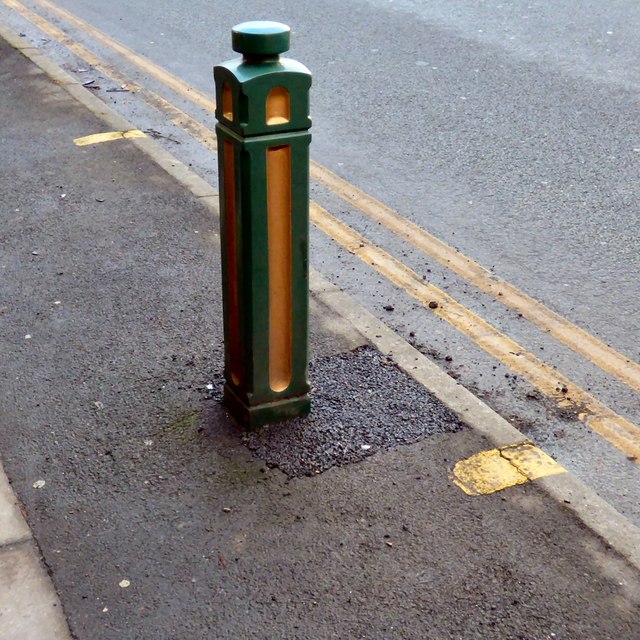
- Steel for impact resistance
- Concrete for structural stability
- Stainless steel for modern appeal
- Natural stone for heritage zones
This variety enables German cities to tailor bollards deutsch precisely to their needs—whether securing pedestrian zones, protecting historical sites, or managing traffic. The right choice of materials and design ensures these urban fixtures serve their purpose reliably while enhancing the city’s visual narrative. It’s this thoughtful approach that makes bollards in Germany stand out in the realm of urban safety and design.
Key Manufacturers and Suppliers in Deutschland – Leading companies producing bollards locally
Germany’s urban landscape is a testament to precision craftsmanship, where safety meets aesthetic finesse in the form of bollards deutsch. Leading manufacturers in Deutschland have perfected the art of producing these essential urban fixtures, blending durability with visual harmony. Companies such as BollardTech GmbH, StadtDesign Spezialitäten, and UrbanShield Deutschland stand at the forefront, offering a diverse array of bollards that cater to every need—be it historical preservation or modern city planning.
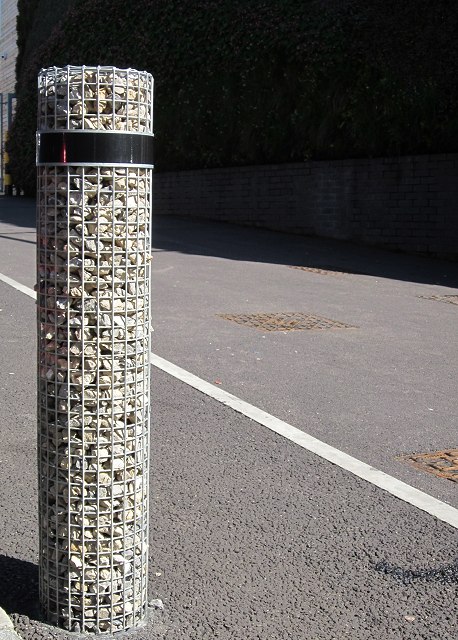
These manufacturers prioritise high-quality materials like steel, concrete, and stainless steel, ensuring resilience against Germany’s often unpredictable weather. Their extensive range encompasses fixed, removable, and retractable bollards—each designed to seamlessly integrate into the cityscape. From sleek, polished finishes to textured natural stone, the options are as varied as the city districts they serve. The craftsmanship behind bollards deutsch exemplifies the meticulous attention to detail that defines German engineering excellence.
In a landscape where safety and style intertwine, these companies create more than mere urban fixtures—they craft protective sculptures that uphold the integrity of public spaces. Whether securing pedestrian zones or safeguarding historical sites, the German market’s dedication to quality ensures that every bollard is both a barrier and a piece of urban artistry. Truly, these manufacturers transform functional safety into a statement of urban identity.
Innovations and Modern Trends in Bollards deutsch
Smart Bollards and Automation – Integration of technology for enhanced security
In the realm of urban security, innovation marches forward with a remarkable blend of sophistication and practicality. Bollards deutsch are no longer merely static barriers; they have transformed into intelligent sentinels, seamlessly integrating cutting-edge technology to heighten safety and operational efficiency. Smart bollards, equipped with sensors and connectivity features, can dynamically respond to environmental changes, enhancing both security and traffic management.
Modern trends highlight automation’s ascendancy—autonomous bollards can now be programmed to retract or deploy based on real-time data, offering unparalleled flexibility. For instance, in bustling city centres, these innovations facilitate smooth pedestrian flow while simultaneously thwarting unauthorised vehicle access. The integration of RFID scanners, cameras, and alarms into bollards deutsch creates a protective web that is both adaptive and resilient.
Such advancements are not only elevating urban safety but also aligning with sustainable infrastructure goals. The allure of these technological marvels lies in their ability to combine aesthetic appeal with functionality—turning traditional bollards into vital components of a smart city ecosystem. As Germany continues to lead in infrastructure innovation, the evolution of bollards underscores a future where security and automation coexist seamlessly, shaping a safer urban landscape for all.
Eco-Friendly Materials and Sustainability – Use of sustainable and recyclable materials
In an era where sustainability isn’t just a buzzword but a necessity, innovations in bollards deutsch are steering urban landscapes towards a greener future. Modern trends highlight a significant shift towards eco-friendly materials that reduce environmental impact while maintaining durability and aesthetic appeal. Manufacturers in Germany are increasingly adopting recyclable and biodegradable substances, ensuring that bollards become not only functional barriers but also part of a circular economy.
Among the most popular materials are recycled steel, sustainable composites, and even bio-based plastics, which exemplify the commitment to environmental responsibility. These materials offer resilience against weather and vandalism, all while supporting Germany’s ambitious sustainability goals. Incorporating such eco-conscious choices into bollard design elevates their role from mere security fixtures to symbols of ecological stewardship.
Furthermore, some manufacturers are exploring innovative solutions like plant-based resins or reclaimed wood, merging traditional aesthetics with modern sustainability standards. As cities expand and infrastructure evolves, the utilisation of environmentally friendly materials in bollards deutsch is becoming an integral part of eco-urban planning. This approach not only aligns with eco-friendly initiatives but also enhances the visual harmony of public spaces—proof that security can be sustainable without compromise.
Aesthetic and Customizable Designs – Tailoring bollards to match urban aesthetics
In the vibrant tapestry of urban design, aesthetic innovation plays a crucial role—especially when it comes to bollards deutsch. These modest yet mighty fixtures are no longer mere security barriers; they are crafted as artistic statements that harmonise with the city’s visual soul. Modern trends embrace bespoke designs that echo the character of their surroundings, transforming functional objects into elements of urban poetry.
Designers and manufacturers are pushing boundaries by incorporating customisable options—colour, texture, and form—that reflect local culture and architectural language. From sleek minimalist forms to ornate, historically inspired motifs, bollards deutsch now serve as versatile canvases for creative expression. This trend not only elevates their visual appeal but also fosters a sense of place and identity within public spaces.
- Personalised finishes that blend seamlessly with historic facades or contemporary landscapes.
- Lighting features embedded into the bollard structure for night-time ambiance and safety.
- Integration of digital interfaces for interactive urban experiences.
Such innovations demonstrate that even the most utilitarian elements can be reimagined as integral components of city aesthetics. With customisable designs, bollards deutsch become more than mere barriers—they become symbols of urban elegance and ingenuity, echoing the unique spirit of each locale while safeguarding its soul.

Installation and Maintenance of Bollards in Germany
Installation Processes – Guidelines for proper installation in various settings
In the intricate dance of urban security and traffic regulation, the installation of bollards deutsch embodies a meticulous fusion of engineering precision and aesthetic finesse. Contrary to superficial assumptions, proper installation transcends mere placement; it demands a nuanced understanding of environmental variables and safety standards that govern German urban landscapes. The process begins with a comprehensive site analysis, where ground conditions and potential load-bearing requirements are carefully evaluated. This ensures that each bollard is anchored securely, capable of withstanding both vehicular impact and natural elements.
Guidelines for installation in various settings—be it bustling city streets, private parking lots, or historical districts—stipulate specific methods to optimise durability and functionality. For example, fixed bollards often require concrete foundations, while retractable variants may involve sophisticated locking mechanisms integrated into the infrastructure. To streamline this process, many manufacturers recommend following a sequence: marking the precise locations, excavating appropriately, installing the foundation, and finally fixing the bollards with high-strength fasteners. Such precision not only guarantees longevity but also aligns with the stringent safety standards prevalent in Germany.
Maintenance Tips – Ensuring longevity and functionality
Ensuring the longevity and optimal performance of bollards deutsch begins with proper maintenance. Regular inspections are vital to identify signs of wear or damage early, preventing costly repairs and ensuring safety standards are maintained. In Germany, where regulations are strict, upkeep isn’t just about appearance — it’s about safety and compliance.
Cleaning bollards deutsch with mild detergents and water keeps them free from dirt, grime, and corrosive substances. For metal variants, applying protective coatings or rust inhibitors periodically can significantly extend their lifespan. If a bollard shows signs of impact damage or corrosion, prompt repair or replacement is essential to preserve its effectiveness.
To facilitate maintenance, many German manufacturers recommend a routine check every six months. This includes verifying the stability of fasteners and foundations, especially in high-traffic areas.
- Inspect for structural integrity
- Check for corrosion or damage
- Ensure fasteners and anchors are secure
These simple steps help keep bollards deutsch performing reliably, whether in bustling city streets or private parking zones. Proper upkeep not only enhances security but also preserves the aesthetic appeal of urban and private spaces alike.
Cost Considerations – Pricing factors and budget planning
In the realm of urban infrastructure, the true cost of bollards deutsch extends beyond the initial purchase. While budget planning might seem straightforward at first glance, it’s crucial to consider hidden expenses such as installation, ongoing maintenance, and potential upgrades. A well-installed bollard in Germany can serve its purpose for decades, but neglecting the financial nuances can lead to unexpected expenditures.
When evaluating costs, several factors influence the final price. The choice of material—whether robust steel or eco-friendly composites—significantly impacts the budget. Additionally, bespoke designs tailored to match the aesthetic of a cityscape or private estate can add to the expense. In some cases, integrating smart bollards with automation features might increase upfront costs but ultimately prove more cost-effective by reducing manual intervention.
To keep expenditure manageable, many German municipalities and private clients adopt a phased approach, prioritising critical zones for initial deployment. This strategy allows for a pragmatic balance between safety, visual harmony, and fiscal responsibility. As with many elements of urban planning, the true art lies in aligning quality and cost to craft a resilient, visually appealing environment—bollards deutsch, after all, are not merely functional but integral to the fabric of modern cities.
Choosing the Right Bollards deutsch
Factors to Consider – Security level, location, and design preferences
When selecting bollards deutsch, the choice hinges on a delicate balance between security imperatives and aesthetic harmony. Every installation must serve a purpose, whether shielding pedestrians from errant vehicles or delineating safe zones in bustling cityscapes. The security level required is paramount; some settings demand robust, high-impact bollards capable of withstanding vehicular assaults, while others benefit from more subtle, decorative variants that blend seamlessly into the environment.
Location plays a pivotal role in determining the ideal bollards. Urban streets, private driveways, or historical districts each pose unique challenges and opportunities. For instance, in high-traffic zones, reinforced bollards deutsch with advanced locking mechanisms or retractable features may be preferred, ensuring flexibility without compromising safety. Conversely, aesthetic preferences might guide the selection towards customisable designs, allowing municipalities and private entities to craft a visual narrative that complements their surroundings.
Comparative Analysis – Pros and cons of different types and materials
Choosing the right bollards deutsch is a nuanced decision that involves weighing various factors like security, aesthetics, and functionality. Different materials offer distinct advantages and drawbacks, making it crucial to understand their unique characteristics. For instance, steel bollards are renowned for their robustness and high-impact resistance, ideal for high-security zones. However, they can be costly and less visually adaptable.
On the other hand, materials like stainless steel or concrete provide durability with a more versatile appearance. Concrete bollards are often preferred in urban environments for their strength and ease of customisation. Meanwhile, decorative bollards made from aluminium or fibre-reinforced plastics can blend seamlessly into historical districts or pedestrian zones, adding a touch of elegance without compromising safety.
- Steel Bollards: High impact resistance but higher cost
- Concrete Bollards: Durable, easy to customise, cost-effective
- Decorative Bollards: Aesthetic appeal, lightweight, versatile
Ultimately, the decision hinges on the specific needs of each location, whether prioritising security, visual harmony, or budget constraints. The variety of bollards deutsch available means that every project can find a tailored solution that balances protection with aesthetic integrity, ensuring safety without sacrificing style.
Consulting Experts – When to seek professional advice
Choosing the right bollards deutsch is more than just a matter of picking a sturdy post; it’s about understanding the nuanced needs of each environment. When safety, aesthetics, and functionality intersect, consulting experts becomes essential. Professional advice ensures that the selected bollards not only meet legal standards but also seamlessly integrate into their surroundings, whether in bustling city centres or tranquil residential areas.
Seeking expert guidance is particularly crucial when your project involves complex considerations like integrating smart bollards or customising materials to match urban aesthetics. Experienced consultants can evaluate factors such as security level, traffic flow, and budget constraints, helping you navigate the myriad options available. Often, a tailored approach—balancing durability with visual harmony—is the key to achieving long-term satisfaction.
In challenging scenarios—such as public spaces with high foot traffic or private properties requiring perimeter protection—professional advice can prevent costly mistakes. Remember, the right bollards deutsch can transform safety measures from mere barriers into elegant, functional design elements. For this reason, engaging with specialists ensures you select the optimal solution, backed by expert knowledge and local standards.
Bollards deutsch in Urban Planning and Civil Engineering
Integration into City Infrastructure – Enhancing pedestrian zones and traffic flows
In the heart of bustling German cities, bollards deutsch serve as silent guardians, seamlessly blending safety with urban aesthetics. Their integration into city infrastructure transforms pedestrian zones into sanctuaries of tranquillity, while maintaining smooth traffic flows. As urban planners strive to balance mobility with security, these versatile fixtures become pivotal in creating harmonious public spaces.
Germany’s approach to bollards deutsch reflects a sophisticated understanding of material innovation and design. From sleek, retractable models that vanish when not in use to robust, fixed bollards that stand as unwavering sentinels, the options are diverse. Their strategic placement ensures pedestrian safety without sacrificing visual appeal or accessibility, often in accordance with strict regulations and standards tailored to the German context.
Moreover, the deployment of smart bollards in urban environments introduces an element of automation, bolstering security through integrated sensors and surveillance. These advancements exemplify how bollards deutsch are evolving beyond mere physical barriers, becoming dynamic components of intelligent city infrastructure. Their ability to adapt to different needs—whether controlling traffic or protecting sensitive areas—makes them indispensable in modern civil engineering projects.
Case Studies – Successful projects across German cities
German cities have long been at the forefront of integrating bollards deutsch into their urban fabric, showcasing a mastery of civil engineering that balances safety, aesthetics, and sustainability. In cities like Berlin, Hamburg, and Munich, successful projects highlight how these versatile barriers can redefine public spaces. One exemplary case is the redesign of pedestrian zones in Berlin, where smart bollards deutsch equipped with sensors effectively regulate traffic while ensuring pedestrian safety. These projects demonstrate a profound understanding of urban needs and exemplify Germany’s innovative approach to civil engineering.
In numerous projects across the country, bollards deutsch have proven instrumental in shaping secure, accessible, and visually harmonious environments. For instance, in Hamburg’s HafenCity, fixed and retractable bollards were strategically installed to protect sensitive areas without disrupting the aesthetic flow. The seamless integration of these bollards underscores Germany’s commitment to combining technology with design—an approach that ensures longevity and adaptability. Such successful case studies serve as benchmarks for urban planners aiming to enhance city infrastructure while maintaining the cultural and architectural integrity of German cities.
Future Trends – Predicted developments in urban safety and design
The future of urban planning in Germany hinges on innovative solutions like bollards deutsch, which are rapidly transforming cityscapes into smarter, safer environments. As cities grow more conscious of security and aesthetic harmony, the role of bollards deutsch is set to become even more pivotal. Imagine a city where traffic is seamlessly managed, pedestrian zones are protected with unobtrusive yet resilient barriers, and sustainability is woven into every design choice—this is the trajectory we’re heading towards.
Predicted developments in civil engineering point towards even greater integration of smart bollards deutsch equipped with sensors, cameras, and automated controls. These advancements will not only bolster security but also optimise urban flow without compromising visual appeal. The emphasis on eco-friendly materials will also escalate, with recyclable and biodegradable options gaining popularity among forward-thinking manufacturers. To keep pace with these trends, urban planners will likely adopt a layered approach, blending traditional bollards with cutting-edge technological solutions.
- Enhanced automation for dynamic traffic regulation
- Customisable designs to match the unique character of each neighbourhood
- Use of sustainable, eco-friendly materials to reduce environmental impact
As cities evolve, so too will the strategic deployment of bollards deutsch, ensuring they remain a cornerstone of modern urban infrastructure. With these innovations, future-proofing cityscapes becomes less of a challenge and more of an exciting opportunity—where safety, aesthetics, and sustainability walk hand in hand along Germany’s bustling streets.
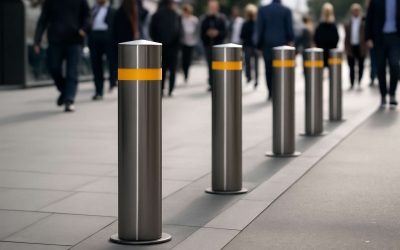
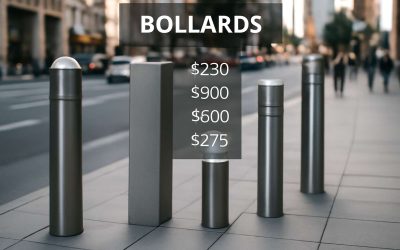
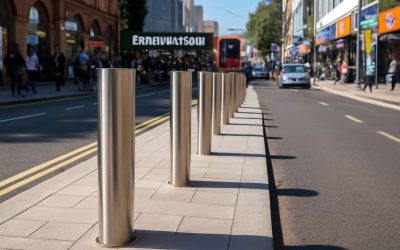
0 Comments